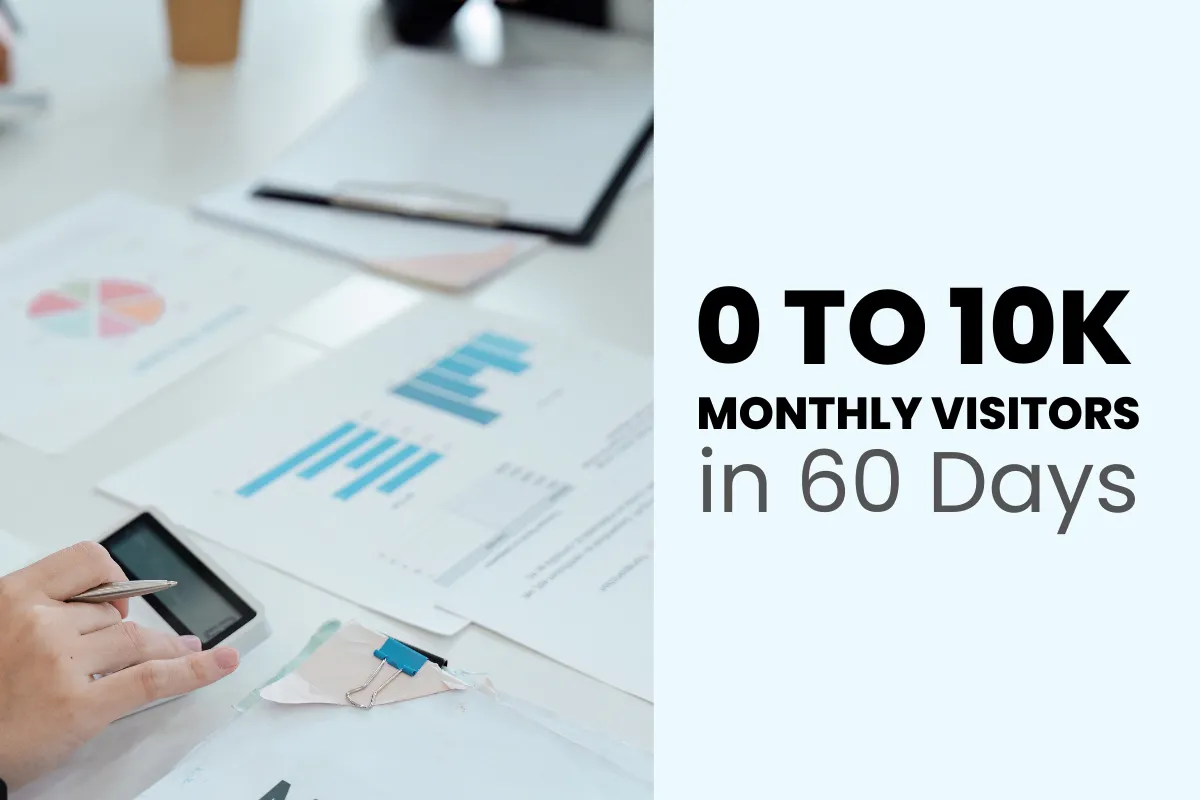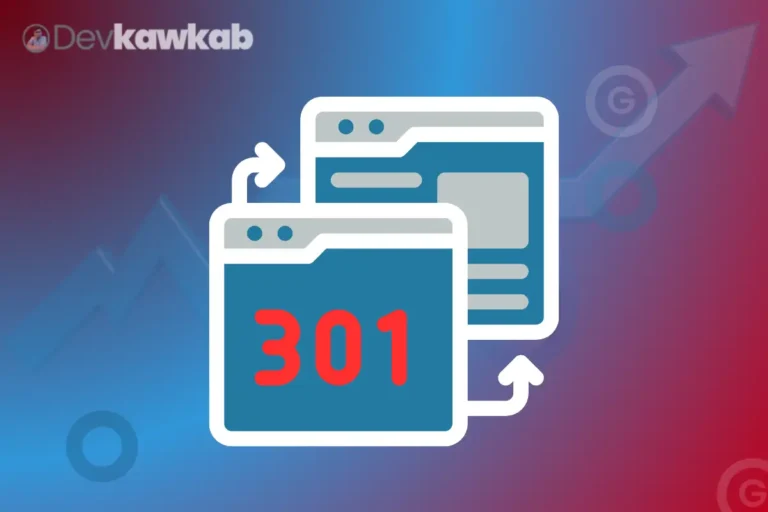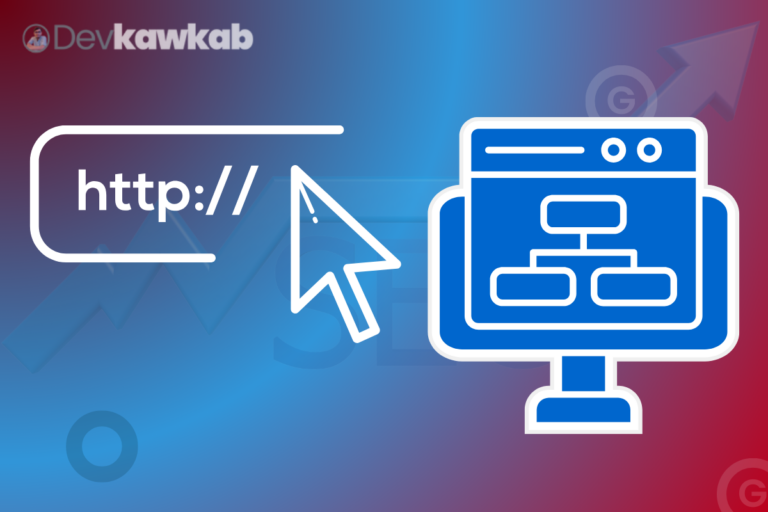Getting to 10,000 monthly visitors is a dream milestone for most site owners. It’s that first traffic number that feels real. Like you’re not just throwing content into the void anymore.
In this case study, I’ll break down exactly how I scaled a brand-new site from 0 to 10,000+ monthly visitors in just 60 days.
No magic. Just focused execution. Let’s dive in.
Starting a New Website: Initial Traffic and Setup
This wasn’t some aged domain with backlinks from Forbes. It was a brand-new site, launched just 3 days before Day 1 of this 60-day sprint.
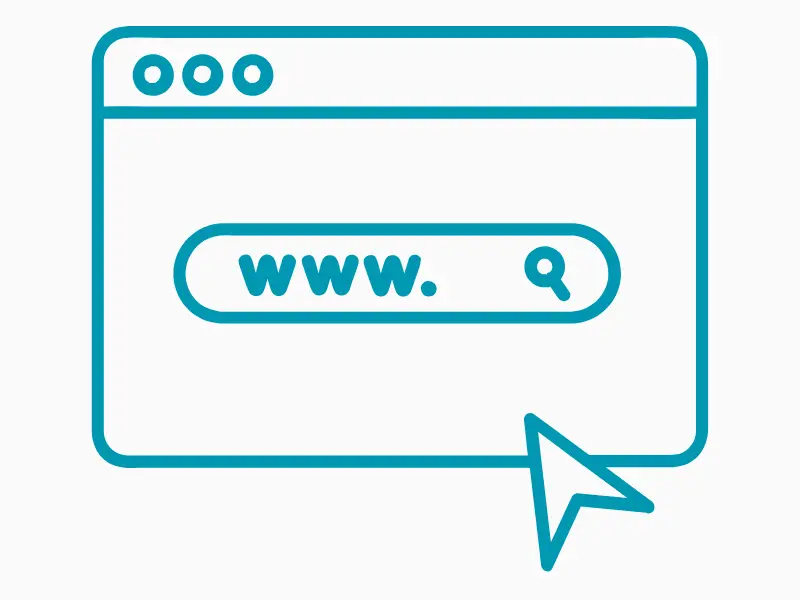
The niche focused on beginner-friendly tech tutorials. The competition was low, but the opportunities were real.
There were no backlinks, no audience, and no authority. Just clean hosting, a fast theme, and a solid plan.
Website Audit and SEO Setup Checklist for Beginners
The first priority was proper tracking. I installed Google Analytics and connected it to Google Search Console. Then, I ran a crawl with Screaming Frog to check for any potential issues.
Since the site was fresh, it was more about preventing future problems. Robots.txt was configured to allow necessary paths and block irrelevant ones. The URL structure was kept clean with no category or tag archives.
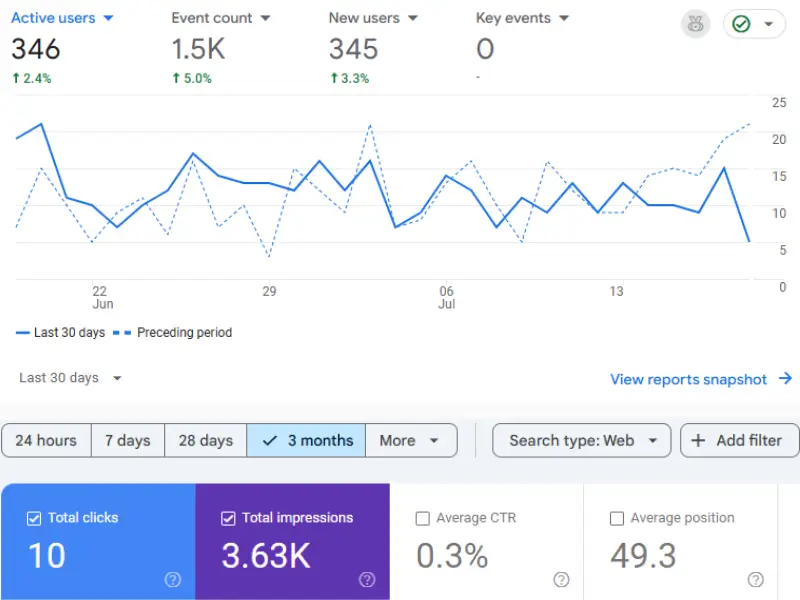
One main sitemap handled everything, and thin pages like privacy policies were noindexed. The site was lean and built with intent.
Keyword Research Tips for Low Competition Traffic
This phase brought the most leverage. Instead of chasing high-volume terms, I went after zero-volume and long-tail keywords.
These keywords were based on very specific questions, like how to resend a confirmation email in Mailchimp or fix SMTP errors in hosting dashboards. These had almost no competition and strong problem-solving intent.
The best part? Many ranked within days. I used Google Autocomplete, Reddit, and Quora to find these queries. Ahrefs also helped surface low-competition keyword gems.
Content Strategy to Grow Website Traffic Fast
I wasn’t writing one post per week. For the first 20 days, I published between 5 to 7 articles daily. Each article was 1000 – 1,500 words long.
The strategy followed a clustering approach. I started with pillar content and surrounded it with several related support articles. These were all linked internally.
Each post had one main keyword and a couple of secondary ones. Content structure was tight, formatting was consistent, and every piece had a clear goal.
The priority was relevance, clarity, and speed. No fluff or AI content – just well-targeted posts optimized for real people and search engines.
On-Page SEO Tips That Boost Website Rankings
After publishing the first 40 posts, I reviewed each one for on-page SEO improvements. Titles were rewritten to be more click-worthy. Meta descriptions were refined to match search intent and stay within 145 characters.

The primary keyword appeared in the H1, within the first 100 words, and at least once in a subheading. Images had optimized alt text, and file sizes were compressed for speed.
I also linked out to a few relevant authority sources in each article. These small tweaks made a big difference in how quickly the content ranked.
Technical SEO Fixes to Improve Site Crawlability
Technical SEO helped ensure the site was ready to scale. Robots.txt was used to block non-essential paths. A single sitemap was submitted in Google Search Console.
Pagination URLs were noindexed, and all 404s were replaced with 410 status codes. External sitemap URLs were removed from the index, and page speed was optimized using LiteSpeed Cache and BunnyCDN.
The mobile user experience was smooth, with a clean theme and mobile-optimized font sizes. These changes made it easier for search engines to crawl and users to navigate.
| Area | Implementation Details |
|---|---|
| Robots.txt | Blocked feeds, tags, authors, and pagination |
| Sitemap | One main XML sitemap |
| 404 Pages | Replaced with 410 errors |
| Page Speed | Optimized with cache plugin and CDN |
| Mobile UX | Clean, responsive theme |
Daily SEO Tasks That Increase Organic Traffic
Each day, I stuck to a simple SEO routine. I checked for any “Crawled – Not Indexed” pages and requested indexing where needed.
New posts were internally linked from older articles to pass link equity. For top-performing pages, I tweaked meta titles and descriptions based on actual search terms.
Pages with high impressions but low CTR were updated to improve click-through rates. Over two weeks, I saw CTR rise from 1.8% to 4.9%.
Link Building Strategies for New Websites!
Backlink building was not the core focus of this sprint. However, I still did a few simple things to help early indexing and referral traffic.
I answered questions on Quora that aligned with my content. I repurposed a few articles for Medium and left helpful comments on a handful of niche blogs.
These weren’t for domain authority – they were to give the site early life. No cold outreach, no HARO, no guest posts. Just purposeful exposure.
How to Speed Up Indexing on Google Fast?
Indexing speed was critical. I followed a simple but consistent routine to get each post indexed quickly.
New URLs were submitted via GSC. Each new post was linked from two existing ones. The sitemap was pinged through Google’s ping tool. I also submitted URLs to Bing and Yandex.
This 4-step approach led to most posts being indexed within 24 to 48 hours. No paid tools, no tricks. Just consistent signals.
SEO Tactics That Worked and Common Mistakes
Publishing content fast with structure paid off. Targeting long-tail keywords with clear user intent made it easier to rank.
Regular on-page updates based on live data from Search Console helped content stay sharp. Internal linking boosted topical authority and crawl depth.
On the other hand, social sharing didn’t do much. Reddit traffic was inconsistent and often deleted. AI-assisted content drafts required too much cleanup.
So, I dropped what didn’t work and leaned harder into what did.
Tracking Website Traffic Growth Over Time
In the first week, traffic rose from zero to 400 visitors. By Day 20, it was above 1,200. Around Day 40, it hit 5,000 monthly visitors.
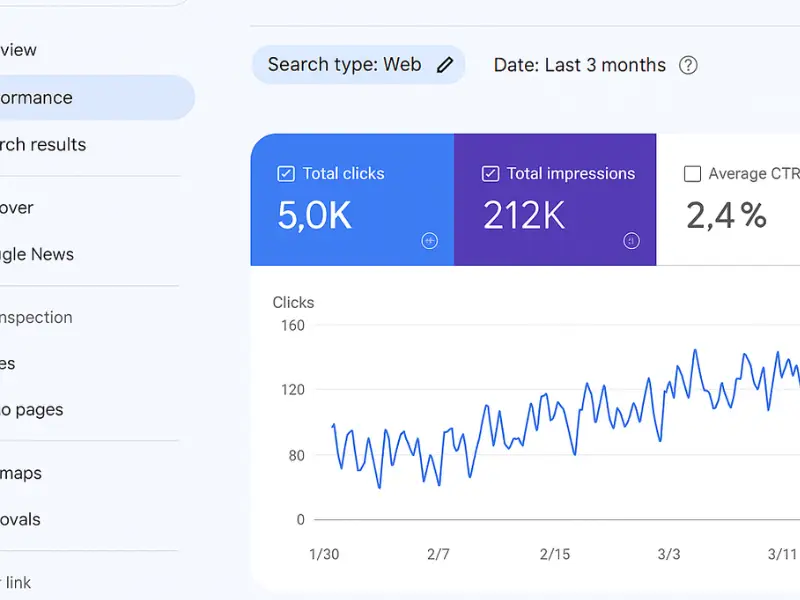
By Day 60, the site crossed the 10,000 marks. GSC showed over 180 keywords ranking, with several pages in the top 3 positions.
Click-through rates also improved, and bounce rates dropped. The site became more engaging and visible with each tweak.
Key SEO Lessons to Boost Your Website Traffic
Focus on content that solves specific problems. Don’t chase traffic – chase relevance. Publish consistently and keep each article structured.
Fix technical issues early, and don’t underestimate the power of internal linking. Watch Search Console closely and refine based on what it tells you.
Success didn’t come from hacks. It came from doing the basics, but doing them well.
Steps to Replicate a 0 to 10K Traffic Strategy
Yes, but you need consistency. For 60 days, you must focus. You’ll need time to publish or edit 3 to 5 articles daily and keep everything clean.
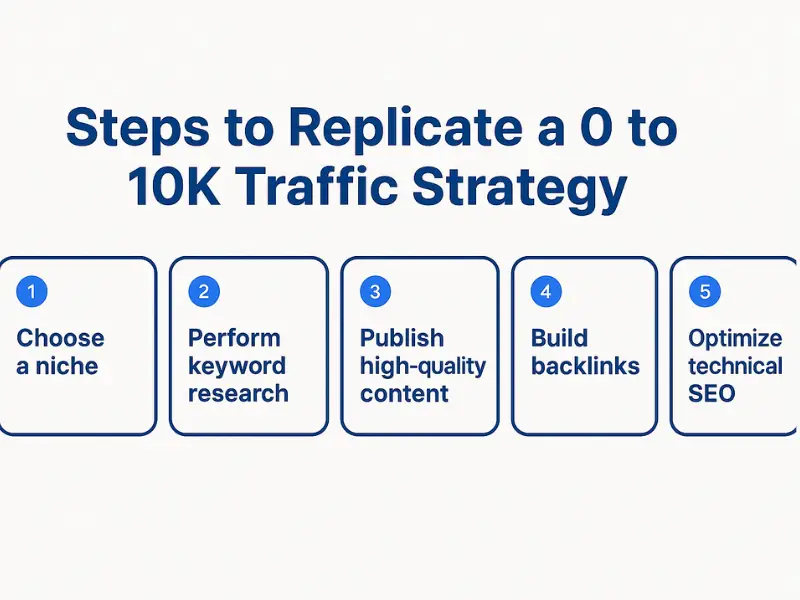
Choose a niche you understand, find low-competition queries, and write real content. Don’t rely on fluff or shortcuts.
Going from 0 to 10,000 visitors isn’t luck. It’s the result of deliberate, focused action. And it’s repeatable.
